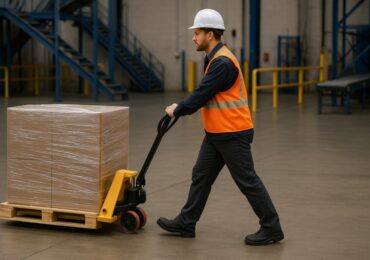What Is Material Handling?
Ensuring proper material handling methods can significantly improve a company’s output and employee safety. Supporting heavy pallets and fragile components streamlines operations and prevents accidents. Well-chosen equipment supports smooth logistics, protects staff, and boosts productivity, fostering a more efficient workplace.

Material handling covers moving, protecting, storing, and controlling materials in manufacturing, warehousing, and distribution. It aims to optimize logistics, reduce risk, and enhance safety through equipment like manual carts and conveyor systems, impacting workflow and safety. For smooth and safe daily operations, outfitting your workplace with reliable solutions like phenolic caster wheels ensures that materials may be moved efficiently across busy environments, reducing floor wear and minimizing staff strain.
Selecting the Right Equipment
Selecting the right material handling equipment requires evaluating space, product size and weight, movement frequency, and employee comfort. Equipment like pallet jacks and AGVs serve specific roles in workflow. Matching tools to tasks improves safety and efficiency, reducing injuries and boosting productivity. High-quality casters ensure smooth operation and lower damage risk. Thoughtful choices decrease incidents, maintenance, and downtime. For heavy loads and diverse surfaces, ergonomic phenolic caster wheels offer durability and floor protection, making them cost-effective across industries. These decisions enhance employee confidence and promote safe handling.
Essential Safety Practices
Developing and enforcing safety protocols is essential for effective material handling. Key practices include lock-out/tag-out, routine inspections, and keeping walkways clear and marked. The National Safety Council highlights safe storage—like placing heavier items on lower shelves and reducing overhead lifts—to prevent injuries. Good housekeeping and well-maintained equipment foster safer, organized workplaces with easy access and movement.
Ergonomics Drives Efficiency
Effective material handling depends on ergonomic principles like adjustable workstations, ergonomic carts, and proper shelving to reduce strain and fatigue. NIOSH studies show ergonomic improvements decrease musculoskeletal issues and injuries, boosting productivity by lowering downtime and maintaining steady output.
Role of Employee Training
Comprehensive employee training is a cornerstone of safe and effective material handling. Even the most advanced equipment provides limited benefit if not operated correctly. Ongoing, hands-on instruction in using lifts, manual handling, and safety protocols instills confidence and capability in staff. Regular refresher courses, clear written protocols, and a culture prioritizing safety over speed contribute to fewer accidents and more reliable daily operations. Industry leaders share that workplaces with robust training programs experience reduced turnover, improved morale, and a measurable drop in injury rates.
Technology Upgrades In Material Handling
Integrating modern technology has transformed the material handling landscape. Automated guided vehicles (AGVs), sensor-driven conveyor systems, and real-time asset tracking via the Industrial Internet of Things (IIoT) help organizations streamline workflows and minimize manual errors. Technologies such as smart glasses for real-time task support and predictive maintenance sensors for equipment represent the next wave of innovation, driving up productivity while maintaining safety. These advancements speed up product movement and deliver invaluable data for continual process improvement.
Cost Savings Through Smarter Handling
Companies prioritizing smart material handling achieve cost savings through streamlined processes and better equipment, which reduces damage, injuries, and downtime. Industry data shows these upgrades lower insurance premiums, workers’ compensation costs, and boost profits. Investing in durable tools and training turns small costs into significant returns, making smart handling vital for profitability.
Looking Ahead: Trends in Material Handling
The future of material handling includes more automation, robotics, and integration with supply chain platforms. AI, machine learning, and eco-friendly equipment boost efficiency and sustainability. Smart sensors and data analytics enable real-time adjustments, predictive maintenance, and energy optimization. As regulations become stricter, eco-conscious materials and reusable solutions like repurposable casters and modular racking will be essential for responsible handling.
Conclusion
Material handling sets the pace for safety, productivity, and sustainability across industries. Prioritizing well-matched equipment, investing in ergonomic workplace design, and integrating continually evolving technologies empowers organizations to operate efficiently and securely, no matter how busy the environment. A culture focused on safe, strategic material handling not only protects workers but translates to measurable business gains for years to come.